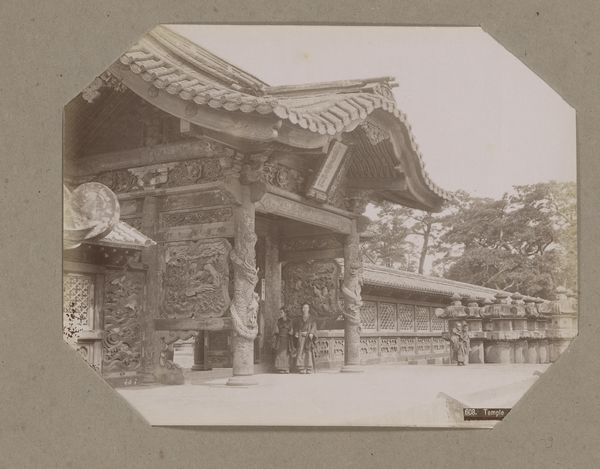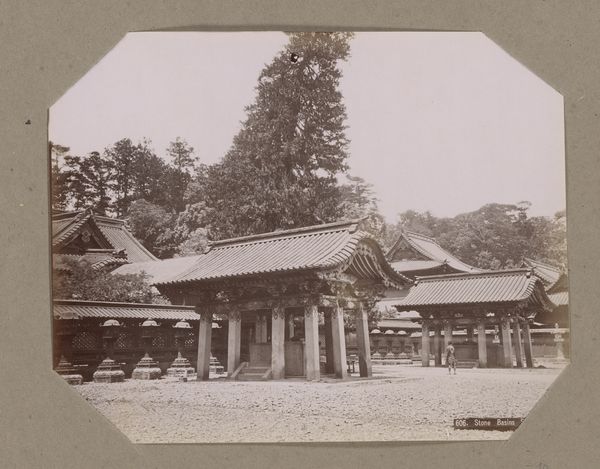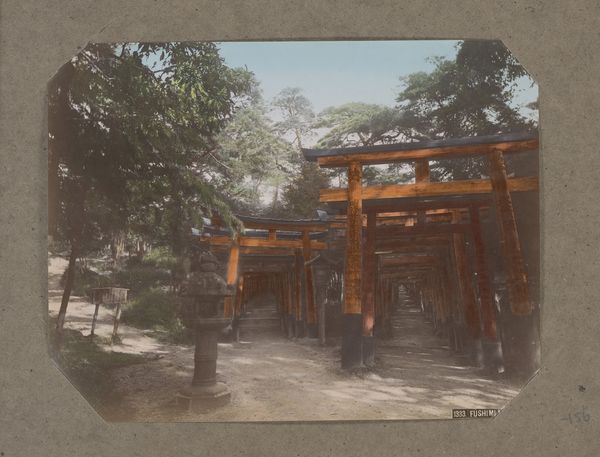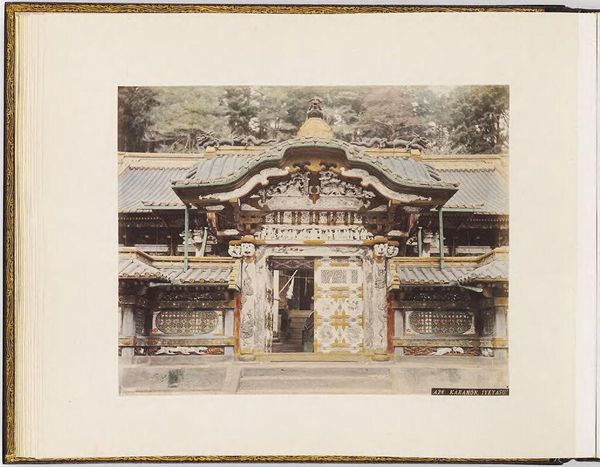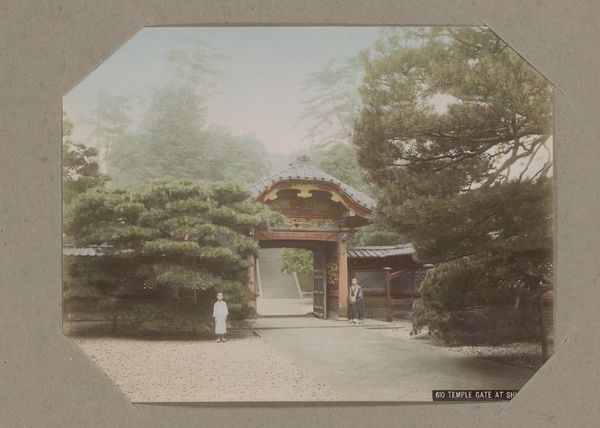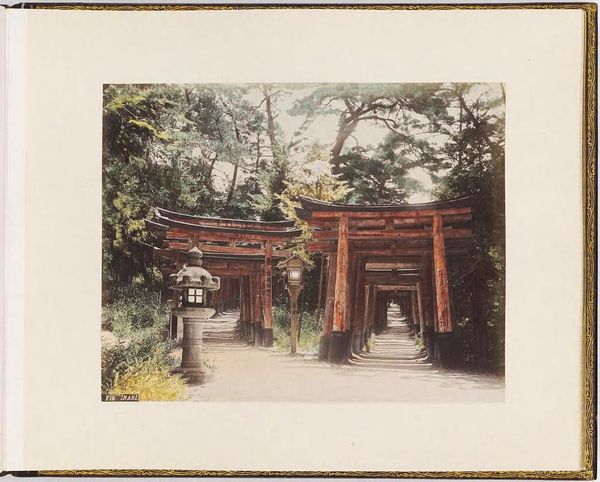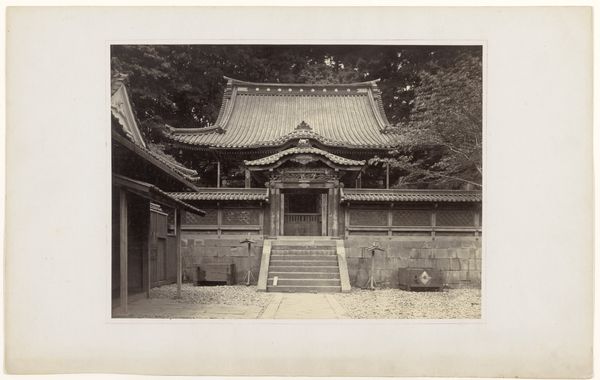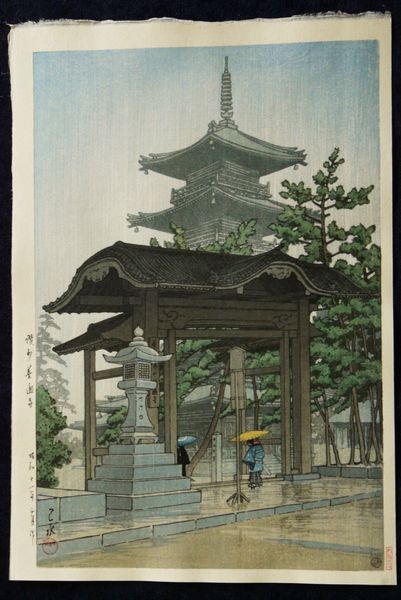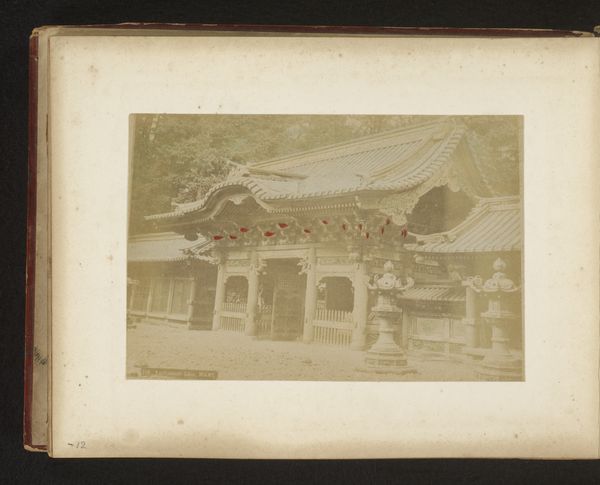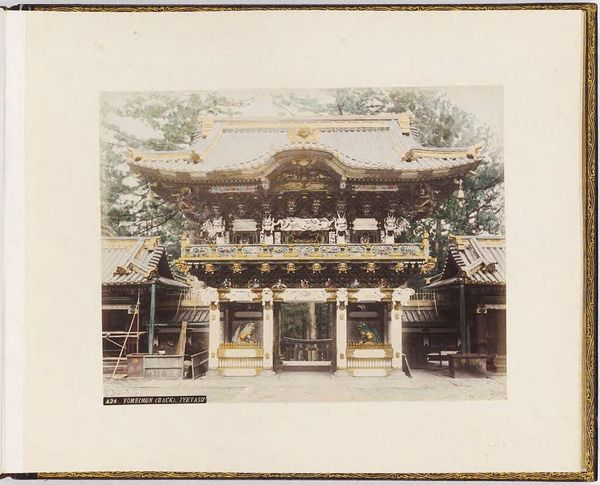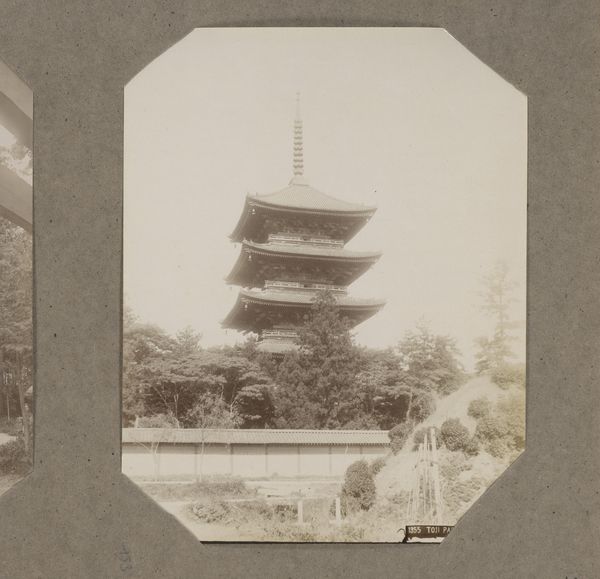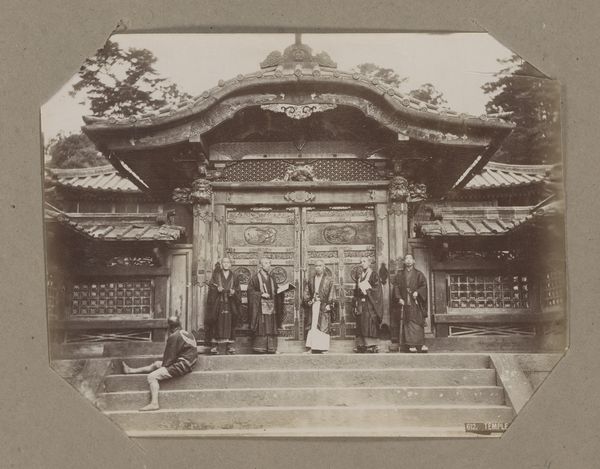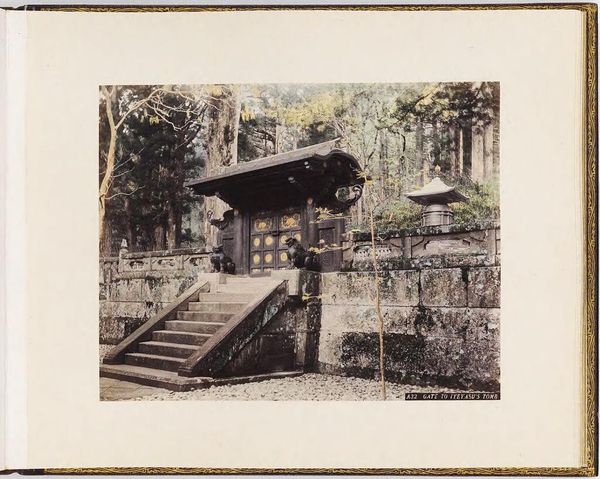
tempera, print, photography, architecture
#
tempera
# print
#
asian-art
#
landscape
#
photography
#
watercolor
#
architecture
Dimensions: height 197 mm, width 261 mm
Copyright: Rijks Museum: Open Domain
Editor: This print, titled "Poort van een tempel in Shiba, Tokyo, Japan," is credited to Kusakabe Kimbei and predates 1903. I’m really struck by how the symmetrical composition and the textured layering of the architectural details create this incredibly stable and ornate visual plane. How would you begin to unpack the complexities of this artwork? Curator: Well, focusing on formal elements, one immediately notices the carefully orchestrated balance. Consider the use of symmetry. It is not merely a mirroring, but a structuring principle. Notice the subtle variations in texture and tone that enrich what might otherwise be a static composition. How do these elements, color, symmetry and balance work together? Editor: It appears to enhance the richness of detail and adds depth and complexity to the image. The muted colour palette allows for a focus on texture and form, whilst ensuring that the artwork remains understated and calming. Curator: Precisely. Now, reflect on how the horizontal lines of the roof tiles contrast with the vertical emphasis of the pillars and the doorway, contributing to the overall sense of harmony and order. Are there any disjunctive features? Editor: Now that you mention it, there are variations to be seen, yes! The stone lanterns, with their rounded forms, offer a contrast to the otherwise angular geometry, and soften the construction by breaking down the vertical lines that you referenced earlier. Curator: Indeed. That play between angular and curvilinear forms introduces a dynamic tension, preventing the piece from becoming overly rigid. In effect the composition reinforces an aesthetic sensibility based upon the interweaving of pattern, balance and variation. A semiotic analysis would provide further insight. Editor: Thank you; examining this piece in terms of its structure has broadened my view considerably. Curator: Indeed. Analyzing an artwork’s compositional structure, helps us identify meaning within an artform, as well as opening doors to historical and cultural understandings.
Comments
No comments
Be the first to comment and join the conversation on the ultimate creative platform.
